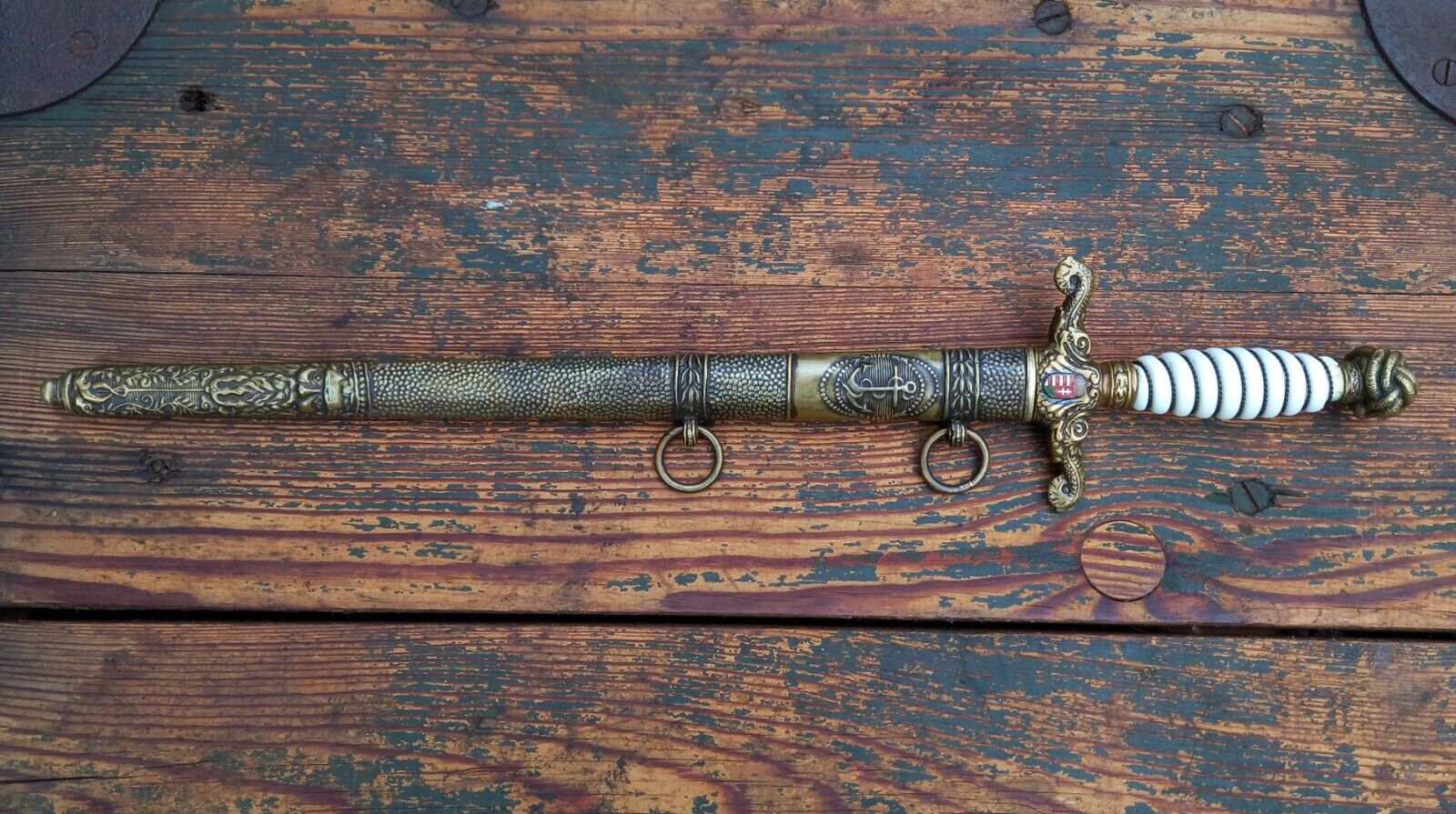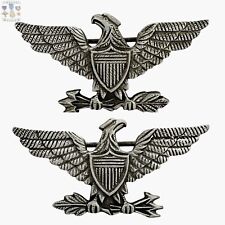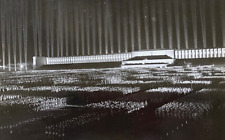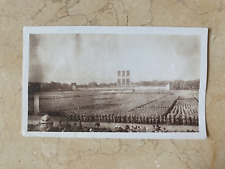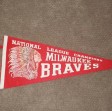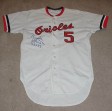When you click on links to various merchants on this site and make a purchase, this can result in this site earning a commission. Affiliate programs and affiliations include, but are not limited to, the eBay Partner Network.
This is an Austro-Hungarian model naval officer\'s dagger used from theWWI era right until the end of WWII in Hungary.
Very fine item.
Inscription reads: To Captain Janos Radnay, 1921.
Historical background:
When the Austro-Hungarian Empire collapsed in 1918, theImperial Danube Flotilla was stationed mainly in Hungary. By default, Hungarytook over those vessels that were in her territory, which meant that she tookover virtually the entire flotilla, consisting of eight armored gunboats, eightarmored patrol boats, and 55 miscellaneous unarmored vessels. Personnelconsisted of approximately 1000 officers and men.
Count Károlyi\'s National Council took over the government in1918, which then proceeded to turn over the powers of government to theBolsheviks in 1919. The Bolsheviks established the Soviet Republic of Hungary.Unfortunately, the Flotilla was also used to fight against soldiers who hadturned against the Reds. These were not in fact part of Horthy\'s\"counterrevolutionary center\".
In 1919 the Hungarian government established the NavalForces under the authority of the Defence Ministry for the purpose ofpatrolling the Danube. It was replaced in 1921 by the civilian Royal HungarianRiver Guard under the Interior Ministry.
In 1919, the Allies transferred all of the fighting vesselsin Hungary to the occupying Serbian army, leaving only some tug boats and motorboats in Hungarian hands.
The Treaty of Trianon
After the Serbs returned the ships given to them by theAllies, the Trianon Peace Treaty of 1920 divided the Danube Flotilla betweenAustria and Hungary. As one of the defeated powers, Hungary was only authorizeda small force for police duties on the Danube to consist of eight patrol boats,two launches, and ten motorboats.
Hungary also received three of the armored patrol boats. Theother vessels were more or less also proportionately divided between Hungaryand Austria, although Czechoslovakia and Yugoslavia also received a few smallervessels. The terms allowed the Hungarian \"navy\" to expand, and theHungarian ships allocated were four relatively modern patrol boats and foursmall minesweepers.
However, the Treaty allowed Hungary only three armoredships. The rest were stripped of their armament under the supervision of theAllied Commission and then were supposed to be scrapped.
The Secret River Flotilla
In 1920 the headquarters for the newly designated RiverFlotilla was raised. Plans were immediately laid for raising several sunkenships.
In 1921, the Hungarians replaced the former River Flotillaand established a civilian Royal Hungarian River Guard under the InteriorMinistry. This new organization was to have a mobilized strength of 5000 men.Peacetime strength was authorized at 1620 men and up to 1800 civilians.
As with all other branches of the Hungarian military forces,the River Flotilla existed in secret. It was officially known the RoyalHungarian River Guard. To maintain the presence, the River Flotilla was evenpublicly subordinated to the Ministry of the Interior, and was featured in itsbudget. On the other hand, its organization, training, and equipment wereobviously military, including the vessels of the former Austrian-HungarianDanube Flotilla. In reality it was part of the Hungarian Army, controlled bythe Honvéd Ministry through the River Forces Inspectorate
By 1922, the Hungarian river forces consisted of 4 gunboats,all launched between 1915 and 1918. The Hungarians also operated a number ofsmall auxiliary vessels, among them 3 armored patrol boats; 2 minesweepers equippedfor mine laying and mine sweeping; a steamer which was used as a command shipduring flotilla exercises, but otherwise served as a supply ship; an armoredtug; a training ship, a repair ship and a tanker. The river and harbor policeused about 30 motorboats, four of which were of a larger type armed withmachine guns.


